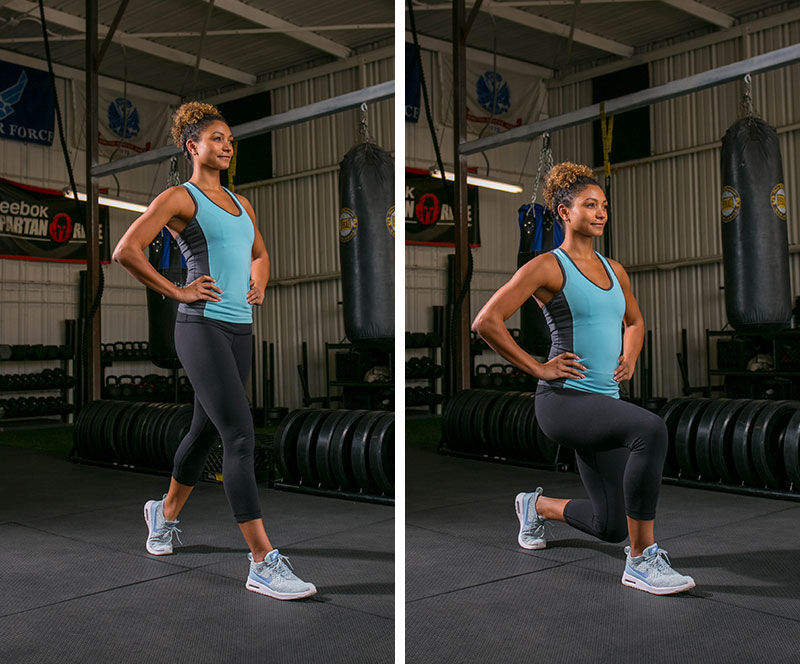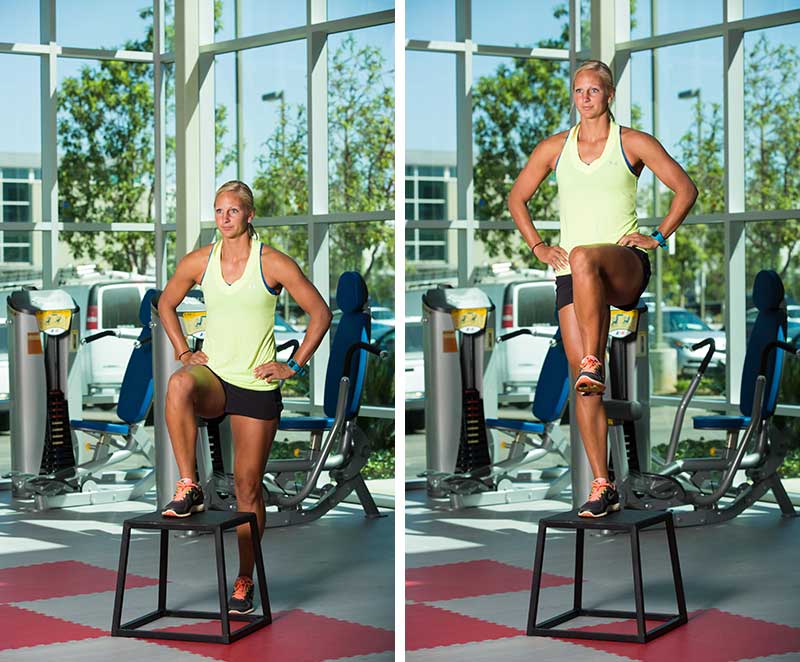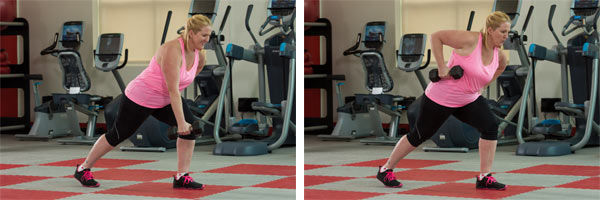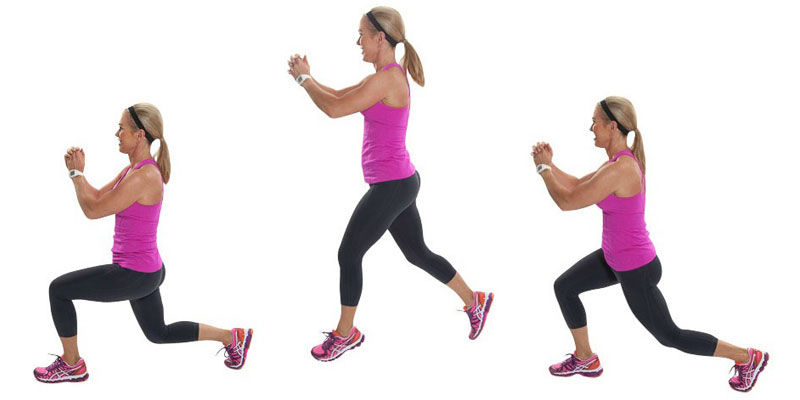Unilateral exercises are single-leg or single-arm movements. The primary benefit of including unilateral exercises in your training programs is that the exerciser is using both sides of the body equally. Doing so helps your clients avoid overtraining or overusing the dominant side, helps to isolate and correct muscle imbalances, improves balance, utilizes core muscles, aids in injury prevention and facilitates rehabilitation.
Compared to bilateral training, unilateral training facilitates rehabilitation to a greater degree. When you train one side of the body the other side is also stimulated. Indirect stimulation of the non-working side of the body via working the opposite side improves strength in the injured area. This is called cross-education of muscles, and is a neural event. The brain pathways that are used for the primary unilateral exercise stimulate the same muscles on the opposite side of the body. The key to applying cross-education is to recognize that it works for the same muscles on the opposite side of the body only. For example, doing a single-leg knee extension with the right leg stimulates the left quadriceps muscle, but not the left hamstrings.
Cross-education is greatest for lower-body muscles and when eccentric (lengthening) contractions are used to train the working muscles (Manca et al., 2017). However, concentric (shortening) contractions also work, as do isometric (no change in length) contractions, though to a much lesser degree.
To utilize unilateral training during sessions, try the suggested exercises and routines below.
Low-impact, unilateral lower-body exercises include:
- Side lunge
- Forward lunge
- Backward lunge
- Single-leg or "pistol" squat
- Box step-up
Unilateral upper-body exercises include:
- Single-arm dumbbell shoulder presses or lateral raises
- Single-arm rows or chest presses
- Single-arm standing dumbbell rows
- Single-arm triceps extensions and biceps curls
Plyometric exercises, which vary in difficulty, can be used to progress unilateral training routines. Note that the exercises below are ranked by level of difficulty from low to high. Start with low-intensity exercises and add medium- to high-intensity exercises as indicated below later in a program.
Unilateral lower-body plyometric drills include:
- Single-leg push-off (low)
- Lateral push-off (low)
- Lateral box jump (medium)
- Jump split squat (medium)
- Single-leg vertical jump (high)
- Single-leg tuck jump (high)
To incorporate unilateral exercises in your client’s workouts, try these sample routines using any combination of the exercises listed above.
Unilateral Lower-body Superset
Alternate sides of the body: Superset one exercise such as a forward lunge and alternate right and left legs. The same approach can be used with arm exercises, alternating right and left sides of the body.
|
Exercise |
Repetitions |
Resistance |
Rest Between Sets |
|
Right Leg Lunge |
10 – 15 |
65 – 85% of 1RM |
20 – 60 seconds |
|
Left Leg Lunge |
10 – 15 |
65 – 85% of 1RM |
20 – 60 seconds |
|
Right Leg Lunge |
10 – 15 |
65 – 85% of 1RM |
20 – 60 seconds |
|
Left Leg Lunge |
10 – 15 |
65 – 85% of 1RM |
20 – 60 seconds |
|
Right Leg Lunge |
10 – 15 |
65 – 85% of 1RM |
20 – 60 seconds |
|
Left Leg Lunge |
10 – 15 |
65 – 85% of 1RM |
20 – 60 seconds |
Right and Left Leg Lunges

Note: Rest periods should reflect the volume (repetitions) and intensity of exercise. Increase the length of the rest period if the volume and/or intensity is high.
Combined Lower-body Unilateral and Bilateral Superset
Choose a unilateral exercise such as a box step-up and alternate it with a set of squats (bilateral exercise) in between the two sets of unilateral exercises. For newer exercisers, body-weight only is recommended for the box step-up; however, external resistance such as handheld dumbbells can be added for intermediate to advanced clients.
|
Exercise |
Reps |
Resistance |
Rest Between Sets |
|
Box Step-up |
10 – 15 |
Bodyweight |
20 – 60 seconds |
|
10 – 15 |
65 – 85% of 1RM |
20 – 60 seconds |
|
|
Box Step-up |
10 – 15 |
Bodyweight |
20 – 60 seconds |
|
Squat |
10 – 15 |
65 – 85% of 1RM |
20 – 60 seconds |
|
Box Step-up |
10 – 15 |
Bodyweight |
20 – 60 seconds |
|
Squat |
10 – 15 |
65 – 85% of 1RM |
20 – 60 seconds |
Box Step-up

Combined Upper-body Exercise and Plyometric Drill Circuit
For advanced programming and workouts, combine unilateral low-impact lower- or upper-body exercises with unilateral plyometric exercises. Repeat the circuit two to three times. Note that the suggested rest period includes zero. This is applicable when moving directly from one exercise to another to accommodate a client’s higher fitness level.
|
Exercise |
Reps |
Resistance |
Rest Between Sets |
|
Right Arm Standing Dumbbell Row |
10 – 15 |
65 – 85% of 1RM |
0 – 60 seconds |
|
Left Arm Standing Dumbbell Row |
10 – 15 |
65 – 85% of 1RM |
0 – 60 seconds |
|
Right Jump Split Squat |
10 – 15 |
Bodyweight |
0 – 60 seconds |
|
Left Jump Split Squat |
10 – 15 |
Bodyweight |
0 – 60 seconds |
Single-arm Standing Dumbbell Row

Jump Split Squat





 by
by 






 by
by